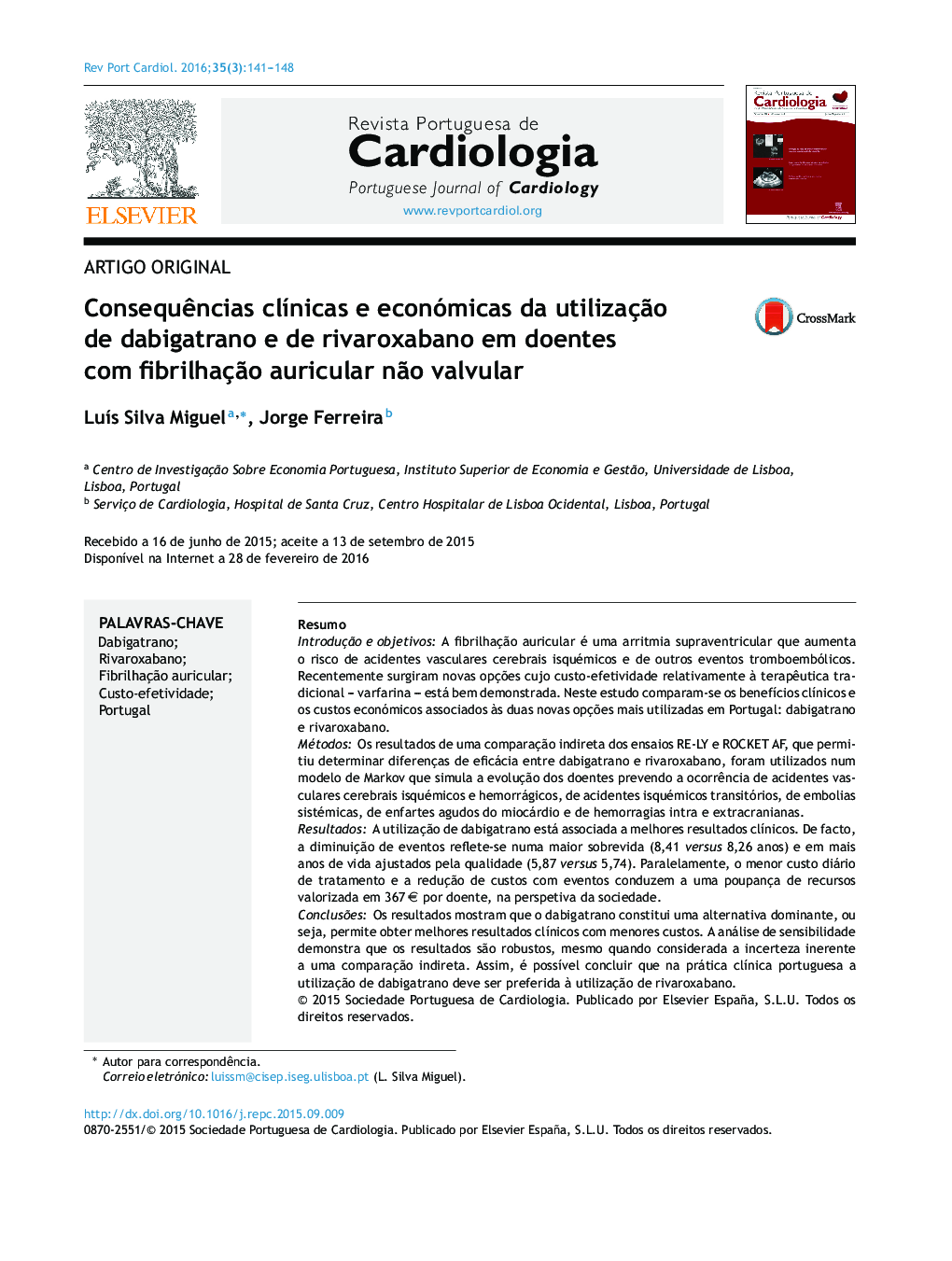| Article ID | Journal | Published Year | Pages | File Type |
|---|---|---|---|---|
| 1125582 | Revista Portuguesa de Cardiologia | 2016 | 8 Pages |
ResumoIntrodução e objetivosA fibrilhação auricular é uma arritmia supraventricular que aumenta o risco de acidentes vasculares cerebrais isquémicos e de outros eventos tromboembólicos. Recentemente surgiram novas opções cujo custo‐efetividade relativamente à terapêutica tradicional – varfarina – está bem demonstrada. Neste estudo comparam‐se os benefícios clínicos e os custos económicos associados às duas novas opções mais utilizadas em Portugal: dabigatrano e rivaroxabano.MétodosOs resultados de uma comparação indireta dos ensaios RE‐LY e ROCKET AF, que permitiu determinar diferenças de eficácia entre dabigatrano e rivaroxabano, foram utilizados num modelo de Markov que simula a evolução dos doentes prevendo a ocorrência de acidentes vasculares cerebrais isquémicos e hemorrágicos, de acidentes isquémicos transitórios, de embolias sistémicas, de enfartes agudos do miocárdio e de hemorragias intra e extracranianas.ResultadosA utilização de dabigatrano está associada a melhores resultados clínicos. De facto, a diminuição de eventos reflete‐se numa maior sobrevida (8,41 versus 8,26 anos) e em mais anos de vida ajustados pela qualidade (5,87 versus 5,74). Paralelamente, o menor custo diário de tratamento e a redução de custos com eventos conduzem a uma poupança de recursos valorizada em 367 € por doente, na perspetiva da sociedade.ConclusõesOs resultados mostram que o dabigatrano constitui uma alternativa dominante, ou seja, permite obter melhores resultados clínicos com menores custos. A análise de sensibilidade demonstra que os resultados são robustos, mesmo quando considerada a incerteza inerente a uma comparação indireta. Assim, é possível concluir que na prática clínica portuguesa a utilização de dabigatrano deve ser preferida à utilização de rivaroxabano.
Introduction and ObjectivesAtrial fibrillation is a supraventricular arrhythmia that increases the risk of ischemic stroke and other thromboembolic events. Recently new treatment options have emerged whose cost‐effectiveness relative to conventional therapy (warfarin) is well demonstrated. This study compares the clinical benefits and economic costs associated with the new oral anticoagulants most used in Portugal: dabigatran and rivaroxaban.MethodsThe results of an indirect comparison of the RE‐LY and ROCKET AF trials, which enabled differences in the efficacy of dabigatran and rivaroxaban to be determined, were used in a Markov model simulating patient outcomes in terms of ischemic and hemorrhagic stroke, transient ischemic attack, systemic embolism, acute myocardial infarction and intra‐ and extracranial bleeding.ResultsThe use of dabigatran is associated with better clinical results. The reduction in events is reflected in longer survival (8.41 vs. 8.26 years) and more quality‐adjusted life years (5.87 vs. 5.74), while the lower daily treatment cost and the reduction in event‐related costs lead to a saving of 367 euros per patient from a societal perspective.ConclusionsThe results show that dabigatran is a dominant alternative, i.e., it produces better clinical results at a lower cost. Sensitivity analysis demonstrates that the results are robust even considering the uncertainty inherent in an indirect comparison. It can thus be concluded that in clinical practice in Portugal the use of dabigatran is to be preferred to the use of rivaroxaban.
